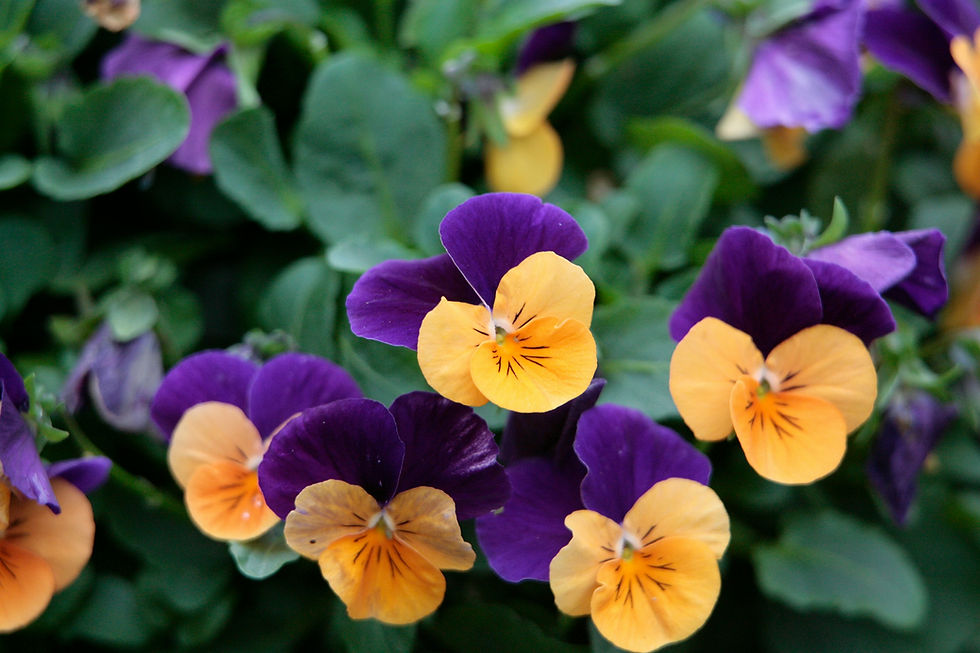Safe and Toxic Flowers for Your Pets: What You Need to Know
- Souraya Moussallem

- Oct 17
- 4 min read

When it comes to creating a beautiful garden or adding a touch of nature to your indoor space, flowers can bring vibrant colours and delightful scents. However, if you have furry friends roaming around your home, it’s crucial to know which flowers are safe and which can pose serious health risks to them. In this blog post, we’ll explore pet-friendly flowers and highlight those that may put your beloved pets in danger.
Understanding the Risks
Flowers bring joy and beauty into our homes, but if you share your space with pets, it’s essential to know which blooms are safe and which can be harmful.
Dogs and cats are naturally curious and may nibble on plants, so understanding the risks can protect your beloved companions.
Therefore, understanding which flowers to avoid is essential for their safety.
Common Toxic Flowers
Some popular flowers are dangerous to pets. Ingesting them can cause mild to severe health issues.
Lilies

Lilies are loved for their beauty, but they are highly toxic to cats. Just a small amount can lead to kidney failure. In fact, studies show that ingestion can lead to fatal outcomes within days if untreated. Symptoms of lily poisoning include vomiting, lethargy, and loss of appetite. If you suspect your cat has ingested any part of a lily, seek veterinary care immediately.
Daffodils

Daffodils house a compound called lycorine, known to cause severe gastrointestinal upset in both dogs and cats. Ingesting the bulb is especially dangerous and can lead to painful symptoms like convulsions and cardiac issues. A 2018 study indicated that 15% of pet poisonings reported were due to daffodil ingestion.
Tulips

While tulips are a favourite spring flower, they can be harmful to pets. Their bulbs are the most toxic part, potentially causing drooling, vomiting, and diarrhea. In cases of severe distress, it’s critical to consult your veterinarian.
Chrysanthemums

Commonly known as mums, these flowers can lead to gastrointestinal upset, skin irritation, and respiratory issues in pets due to their toxicity. Keeping them out of reach is a smart way to avoid potential problems.
Baby’s Breath

Mild stomach upset.
Pet-Friendly Flowers
You don’t have to give up fresh blooms to protect your pets! Many popular flowers are perfectly safe. Let’s explore some beautiful blooms that are safe for your furry friends.
Roses

Roses are not only stunning but also safe for pets. While the thorns can pose a risk, the petals and leaves are non-toxic. Just be mindful of any pesticides or chemicals used on the plants.
Sunflowers

Sunflowers are bright and cheerful, making them a great addition to any garden. They are safe for both dogs and cats, and their seeds can even serve as a healthy treat for your pets.
Marigolds

These vibrant flowers are a safe choice for pets. Additionally, marigolds can help deter certain pests in your garden, making them a practical option for pet owners looking to keep their gardens healthy.
Snapdragons

Snapdragons are whimsical and pet-safe flowers that add a unique touch to your garden. With a variety of colours available, they can thrive in many climates.
Pansies

Pansies are lovely and safe for pets. Their colourful blooms can brighten up your outdoor space or indoor décor, ensuring safety for both dogs and cats.
Orchids (most varieties, e.g., Phalaenopsis)
Zinnias
Asters
African violets
Freesia
Pet-Safe Greenery & Fillers

Greenery is just as important as blooms in any arrangement. Here are some safe options:
Ruscus
Eucalyptus (in small amounts – not tasty but not deadly)
Ferns (Boston, Maidenhair – avoid Asparagus fern, it’s toxic)
Herbs like rosemary, thyme, basil, and mint.
Educate Yourself and Others
Share your knowledge about pet-friendly flowers with friends and family. The more people understand plant safety, the better we can protect our furry friends.
What to Do If Your Pet Ingests a Toxic Flower

If you suspect that your pet has ingested a toxic flower, it’s vital to act quickly. Here’s what you should do:
Identify the Plant
Try to identify the plant your pet has consumed. Taking a picture or bringing a sample to your veterinarian can significantly help in determining the best treatment.
Contact Your Veterinarian
Reach out to your veterinarian or an emergency animal clinic immediately. They can provide guidance on the necessary actions and whether your pet needs to be examined.
Monitor Symptoms
Watch for any symptoms of poisoning, including vomiting, diarrhea, or lethargy. If symptoms worsen, seek veterinary care promptly.
Don’t Induce Vomiting Without Guidance
Do not attempt to induce vomiting unless specifically instructed by a veterinarian, as some plants can cause more harm if vomited.
Tips for a Pet-Friendly Flowers
*Even small bites of Toxic flowers can be dangerous, especially to cats, who are more sensitive to certain toxins.
*Even safe flowers can cause mild stomach upset if eaten in large amounts.
Always supervise your pets when they are around any plants.
Enjoying Nature with Peace of Mind
Creating a beautiful garden or bringing flowers into your home doesn’t have to come at the expense of your pet’s safety. By knowing which flowers are safe and which ones are dangerous, you can enjoy nature's beauty while keeping your furry friends protected. Always do your research, monitor your pets, and consult your veterinarian if you have concerns. With a little knowledge and care, you can create a pet-friendly environment for all to enjoy.







Comments